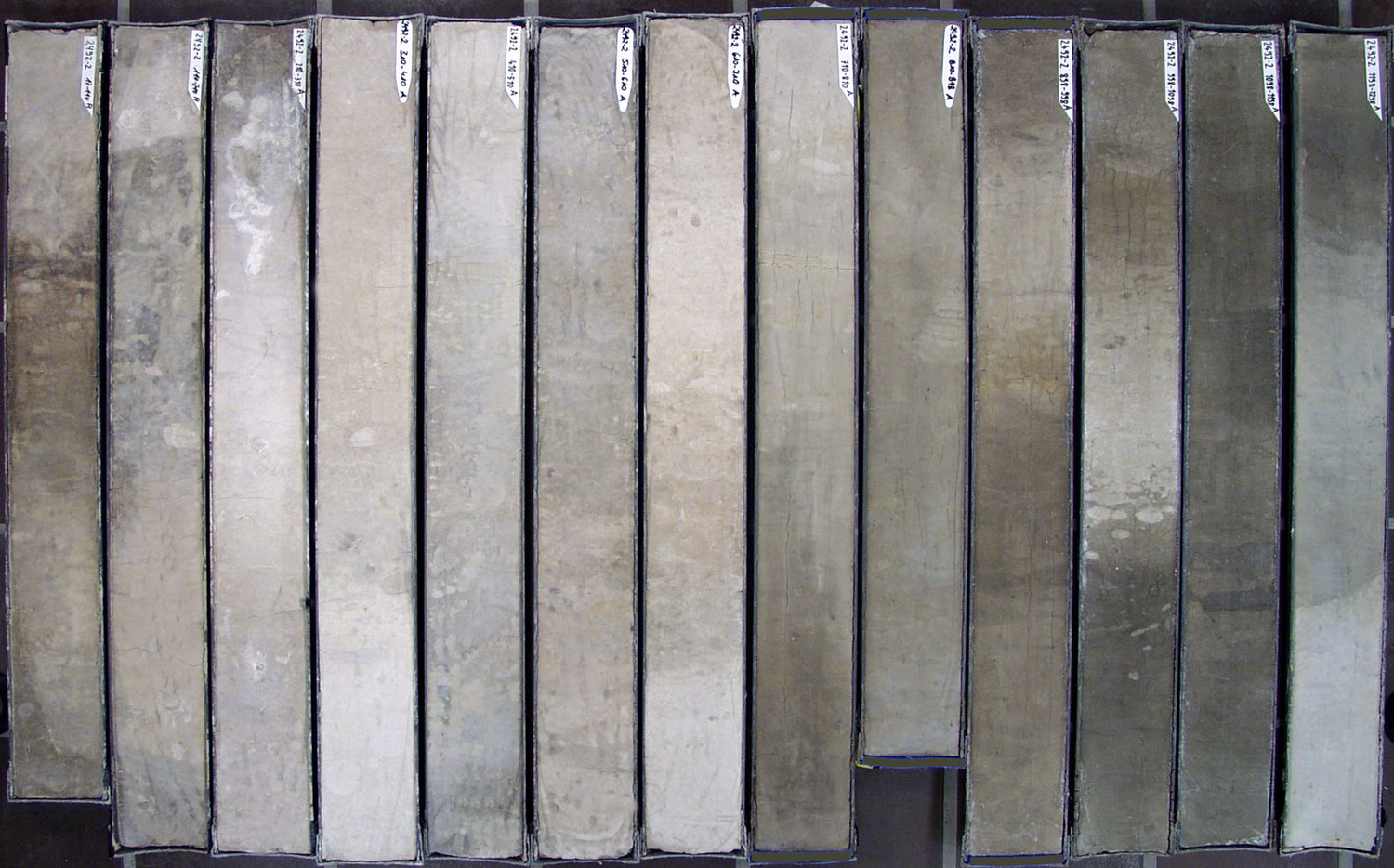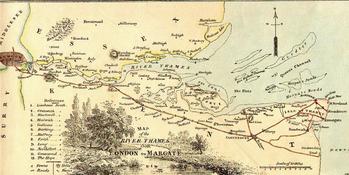Planet Earth Online - Sediment Cores Tell History of the Thames
Interview with
Helen - Wading into a river and digging until you get to the slime, soil, dirt, and other matter at the bottom may not be everyone's idea of a great day out, but in the right hands, a core of river sediment can become an eye-opening time machine into the past. Planet Earth podcast presenter Richard Hollingham went to Nottingham to meet Senior Geochemist Chris Vane from the British Geological Survey. There, at its environment handling facility, Chris delved into a large freezer to reveal the secrets of river sediment cores...
Chris - We keep the cores frozen so that they preserve really well.
Richard - So let's open this up. It says "Thames Pollution" on the lid of a big chest freezer...
Chris - That's right. And you can see there's over 57 sediment cores in here, each of about 1 metre in length and then they're sealed at both ends.
Richard - Can I pick one up?
 Chris - Absolutely, yeah.
Chris - Absolutely, yeah.
Richard - So you stood on the banks of the Thames and drilled this sediment out.
Chris - Yes. We simply used a hand coring device and pushed through the sediment.
Richard - So it's a metre long. How far back does it go?
Chris - We're probably going back here, to before the start of the industrial revolution, so around about 1750 let's say, would be the base of this core, and then even before the industrial revolution, there'll be a large number of chemical fossils associated with agriculture and things like that.
Richard - A record of humanity on the Thames.
Chris - A record of humanity on the Thames and how society and urbanisation of London has changed through time.
Richard - I'll let you put that down because it's very cold.
Chris - Yes.
Richard - And let's go back to the lab and see what you do with this data...
...And this is the organic geochemistry laboratory which is a white lab, full of white boxes and these are the analytical equipment with tubes and dials, and buttons. There's even what looks like an oven over there, why an oven?
Chris - It's very important for us to know the weight of the dry sediment, so it's useful to simply have a drying oven just to drive off the water so we have a standard weight of sample before we put it into this sophisticated instrumentation.
Richard - And from this, you can tell what chemicals are in those tubes of sediment?
 Chris - That's right. Go down those sediment tubes and take slices of that sediment, and then what we do is we analyse that on this instrumentation. And from that, we can look at different chemical relics of the past. For example, we can look at chemicals from major use of coals called PAHs, we can look at chemicals from hydraulic systems in industrialisation called PCBs, polychlorinated biophenols.
Chris - That's right. Go down those sediment tubes and take slices of that sediment, and then what we do is we analyse that on this instrumentation. And from that, we can look at different chemical relics of the past. For example, we can look at chemicals from major use of coals called PAHs, we can look at chemicals from hydraulic systems in industrialisation called PCBs, polychlorinated biophenols.
Richard - Small eras really. Eras of humanity and that human's influence on the environment.
Chris - That's right. What we're talking about here is basically dating something called the Anthropocene. It's this notion of basically, the current period we're living in, in which man has altered it, and then that alteration is preserved in the sediment.
Richard - And I suppose within that you've got the industrial revolution, you've got coal, you've got more recently, nuclear - you can see those?
Chris - That's right. We've got the coal age with elevated PAHs, we've got the fuel age, major use of vehicles, and we can tell that from total petroleum hydrocarbons and lead isotopes. Then we've got markers of the nuclear age through radionuclides and then these markers of the electrical age through PCBs, and other compounds such as flame retardants. Many of these compounds are resistant to biodegradation and so they're preserved in the sediment record.
Richard - This idea of the Anthropocene is interesting in itself, but can you use this information about pollution within these sediments? Is it relevant to the future?
Chris - Yes, it's very relevant to helping us manage our estuaries and rivers better because although many of the pollutants are preserved maybe a metre or so down in depth, these river and estuarine systems are liable to change as sedimentation changes, and they can actually be remobilized and move to the surface where they can impact both upon the ecology of the estuary and river but also upon humans. So although it seems like it's something which may have been deposited maybe in the 1930s, it's still relevant to us now because it can still impact us.
Richard - So you look at highly toxic chemicals like PCBs which were around in what, the 1950s and the 1960s.
Chris - Yes, '50s, '60s, '70s.
Richard - They're locked in the sediment at the moment but disturb that and they're released again into the environment.
Chris - Absolutely, so we need to understand basically where they are, where they are in time, and also the process via which they could be remobilized and affect humans.
Helen - Chris Vane, talking to Richard Hollingham about the fascinating insights gained from sediment cores from the river Thames.









Comments
Add a comment